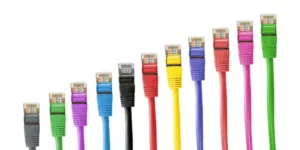Who can honestly say that they would get along just fine without the internet? Not many people we bet, and those that really are quite content living without an internet connection, well, they probably don’t need this guide. However, for the vast majority of us, the internet is an essential tool, something that is every bit as important to our home infrastructure as the electricity and sewage. Whether it is mainly used for recreation, or to allow us to work partly or wholly from home, having a reliable internet connection is a must.
With that said, there is no denying that choosing an internet provider can be a bit of a headache. It seems that either we are stuck with just one option where we live, or that there are a multitude of companies that we can’t tell much of a difference between. This guide is intended to help you understand the different types of broadband available and what the difference is between them.
DSL
DSL stands for ‘Digital Subscriber Line’. It is a form of broadband which operates over a phone-line, like dial-up used to, but offers significantly better speeds, which can be as fast as 25 megabits per second. It is hoped that soon there will be 100 Mbps DSL lines available.
There are two types of DSL, symmetric (SDSL) and asymmetric (ADSL). ADSL is the cheaper and more common of the two, the difference between them is that SDSL offers equally fast upload and download speeds, whereas ADSL offers great download speeds, but slower upload speeds.
DSL is one of the more affordable options and offers reliably high speeds, however the further you are from the provider’s central office, the slower the speeds will be.
Cable Broadband
Cable broadband is offered by the same companies that offers cable television. It is transmitted over the same coaxial cables as television and offers download speeds which range from 3 – 100 Mbps. Unlike DSL lines, cable broadband speeds do not depend upon your distance from the central office. However, the infrastructure is often shared with other nearby homes and where the number of users is high, speeds can drop.
Satellite
As the name implies, satellite internet connections are transmitted using, well, satellites. In terms of speed they tend to offer around 15 Mbps download speeds and 3 Mbps upload, Ars Technica have an excellent article about them.
Satellite connections often cover areas that aren’t served by DSL or cable. While satellite broadband is usually more expensive, it is the only option for many people living in rural areas.
Fiber Optic Service (FiOS)
The latest significant advance in internet connectivity options has been the introduction of optical networks. These use light to transmit data, and the fiber-optic lines are made of pure glass which is very thin, as thin as a human hair. The speeds for FiOS can be as high as 300 Mbps download and 65 Mbps upload. FiOS is the fastest type of broadband around, but right now it only really serves major cities.
Choosing the right broadband type will depend a great deal on where you live and what infrastructure exists there. All forms of broadband will offer users a reasonable internet browsing experience; you should balance your needs against the cost and decide which is most appropriate for you.








